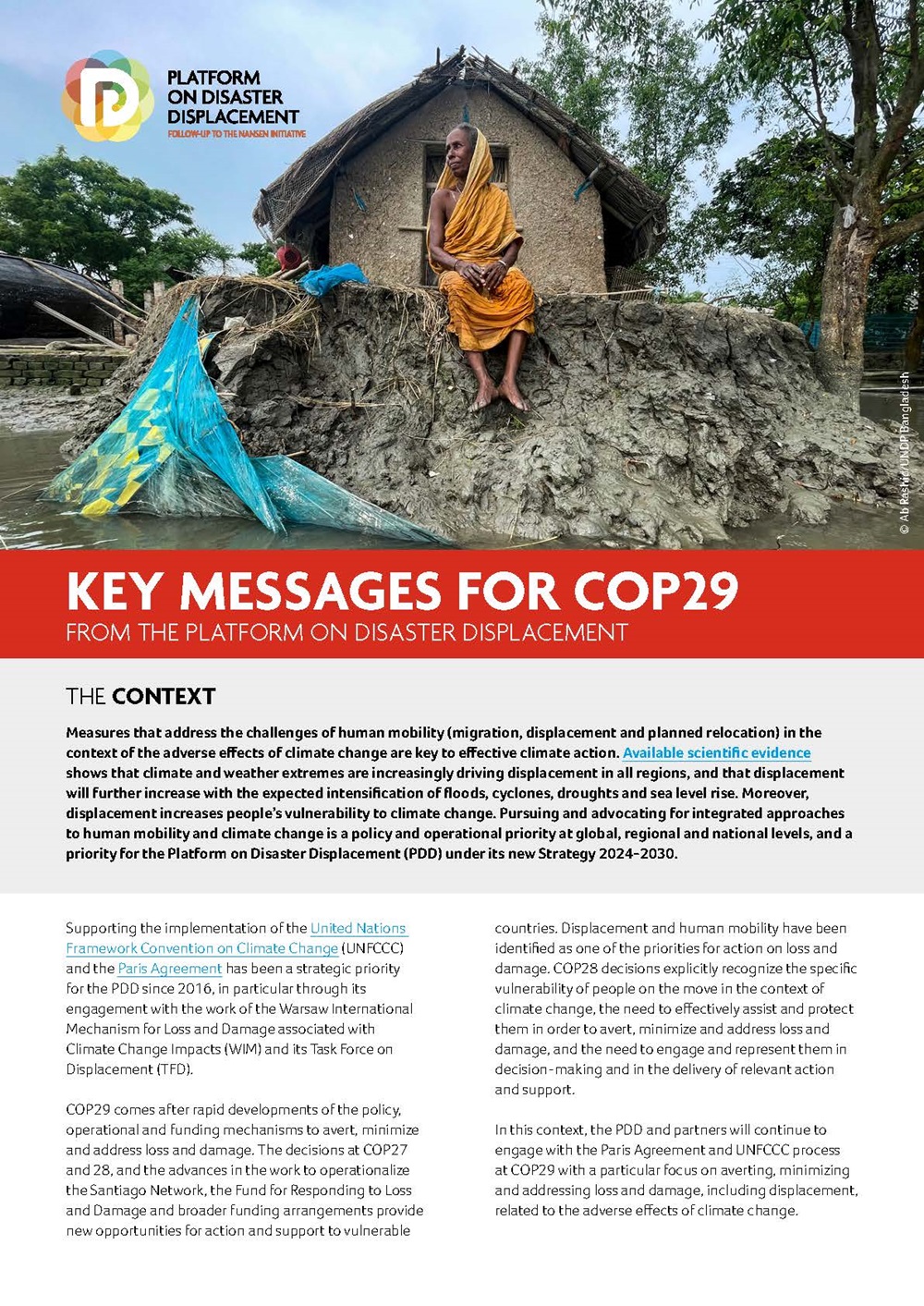Climate Change Displacement and International Law: Complementary Protection Standards
Jane McAdam
Movement in response to environmental and climate change is a normal human adaptation strategy. It can provide a means of escaping danger and increasing resilience, especially when it is planned.
The difficulty today is that people cannot simply migrate as and when they choose: national immigration laws restrict the entry of non-citizens into other countries. International law only recognizes a very small class of forced migrants as people whom other countries have an obligation to protect: ‘refugees’, ‘stateless persons’, and those eligible for complementary protection, discussed below. This means that unless people fall within one of those groups, or can lawfully migrate for reasons such as employment, family and education, they run the risk of interdiction, detention and expulsion if they attempt to cross an international border and have no legal entitlement to stay in that other country.




